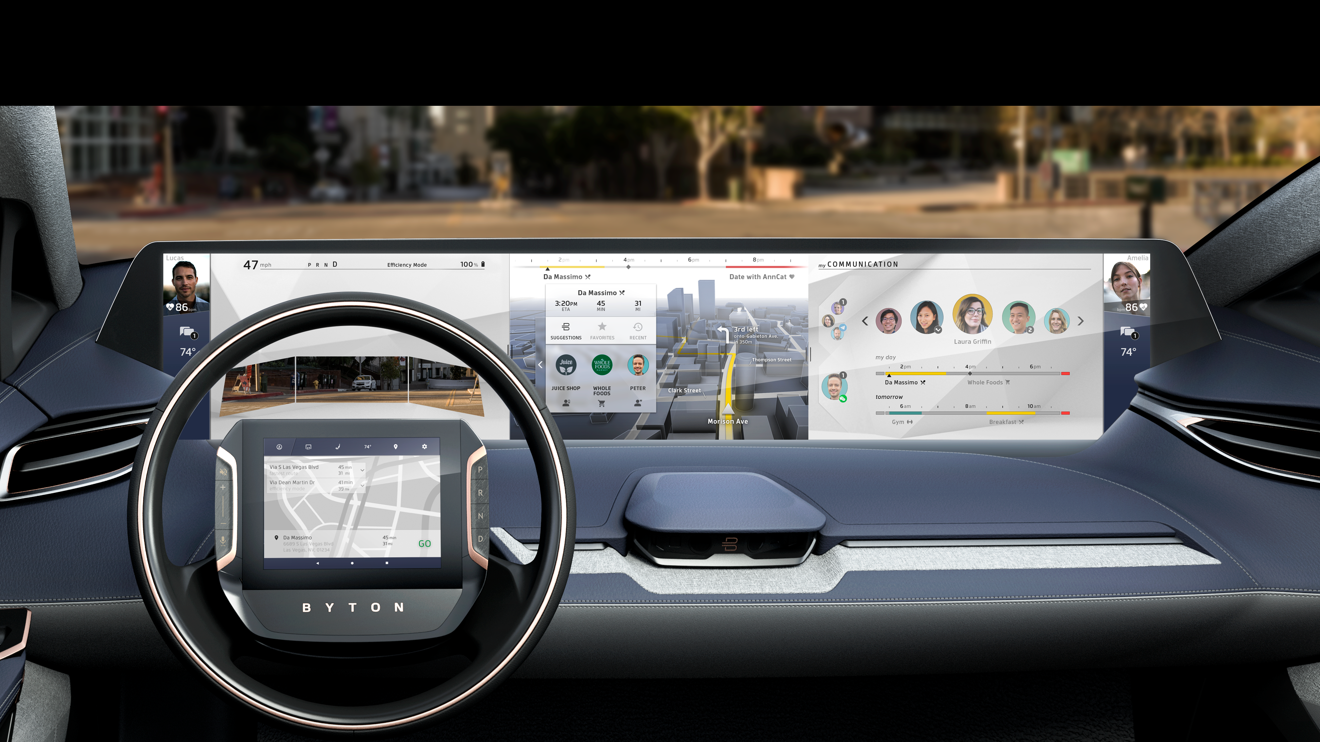Byton
A multi screen, Chinese electric vehicle, with a massive screen that is touch, motion gesture and voice controlled.
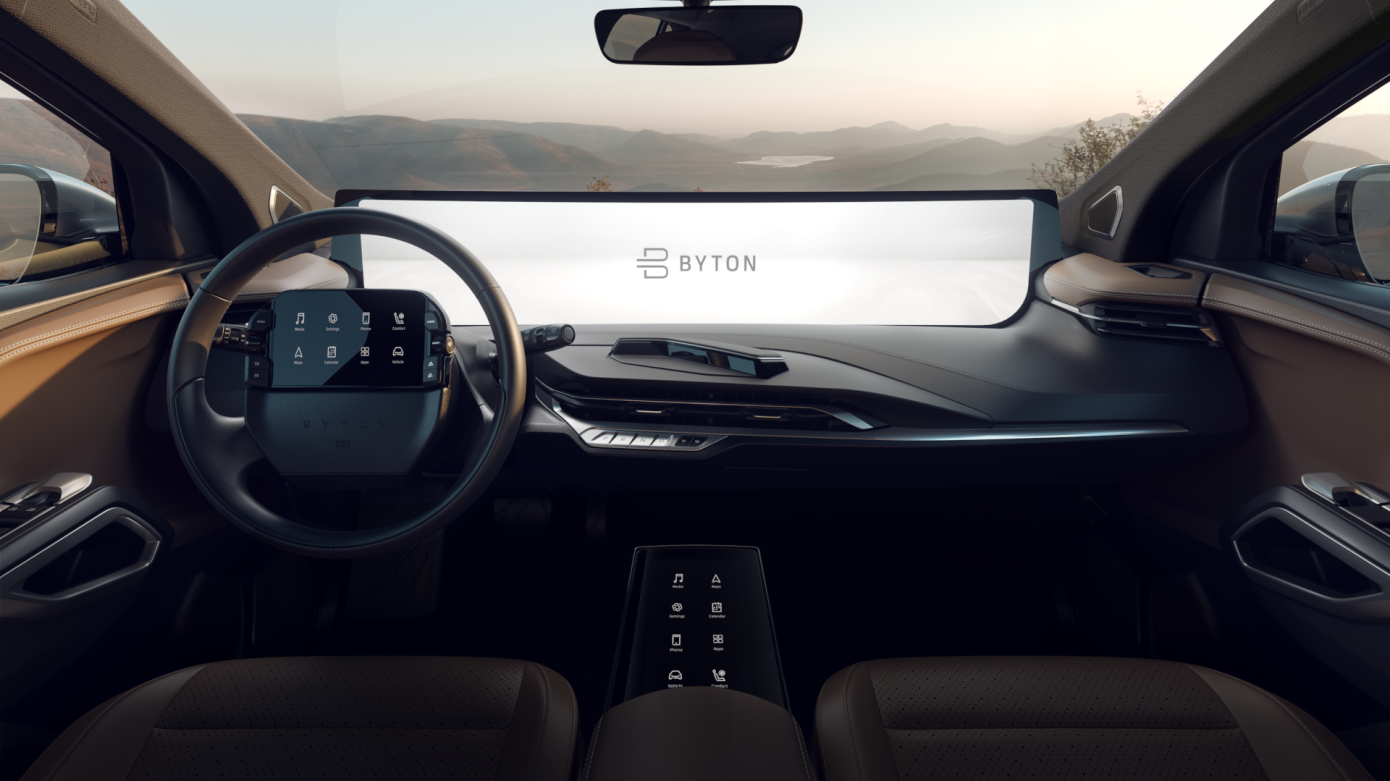
The project is still under NDA hence the details are sparse. For details regarding my contribution to this project please reach out to me at vanessajoho@gmail.com
Role:
Principal UX Designer - I led the UX Design of the ADAS (Advanced Driver Assistive System), the Steering Wheel Hard Buttons Architecture, and the Health Application displayed in the 2019 production car. I also performed research interviews in the Co-Creation Study in Shanghai, China, and collaborated with team mates in developing the overall Multi-screen System Interaction Model
Business Goals:
Produce the first concept car to generate interest from buyers and investors.
ADAS - Advanced Driver Assistance System
Worked closely with a 10+ hardware/software engineers as I led the design process and direction of all the Level 2 autonomous system, from research to prototyping to design freeze. It includes the Bosch / Aurora compatible ADAS features listed below. Since the company offers buyers a premium and standard package, I had to architect and design some of the ADAS features in 2 versions (e.g. Semi Auto Parking and Auto Parking).
- ADAS Features (Bosch Compatible):
- Inteligent Adaptive Cruise Control (I-ACC)
- 2D/3D Surround View Camera
- Auto Parking + Semi Auto Parking
- Front Collision Warning (FCW)
- Auto Emergency Brake (AEB)
- Lane Departure Warning (LDW)
- Lane Keep Assistance (LKA)
- Blind Spot Detection (BSD)
- Door Open Warning (DOW)
- Traffic Sign Recognition (TSR)
- Rear Cross Traffic Alert (RCTA)
- Dash Camera (DC)
User Problem:
What do customer’s need and want while driving / parking to feel safe and make the experience more efficient?
Business Goals:
- - Shows company values customer’s safety
- - Makes Premium Package more attractive to potential buyers by adding ADAS
- - Attracts wider audience because of varied price point between packages
Tasks:
Lead junior designers, coordinate with PM, Competitor Research, Low Level System Architecture, High Level System Architecture, UX Architecture Flow, Use Cases, Low Fidelity Wireframes, High Fidelity Wireframes, Prototype, Define Haptic Feed Trigger, Define Chime Feed Level and Trigger, Bosch Compatible

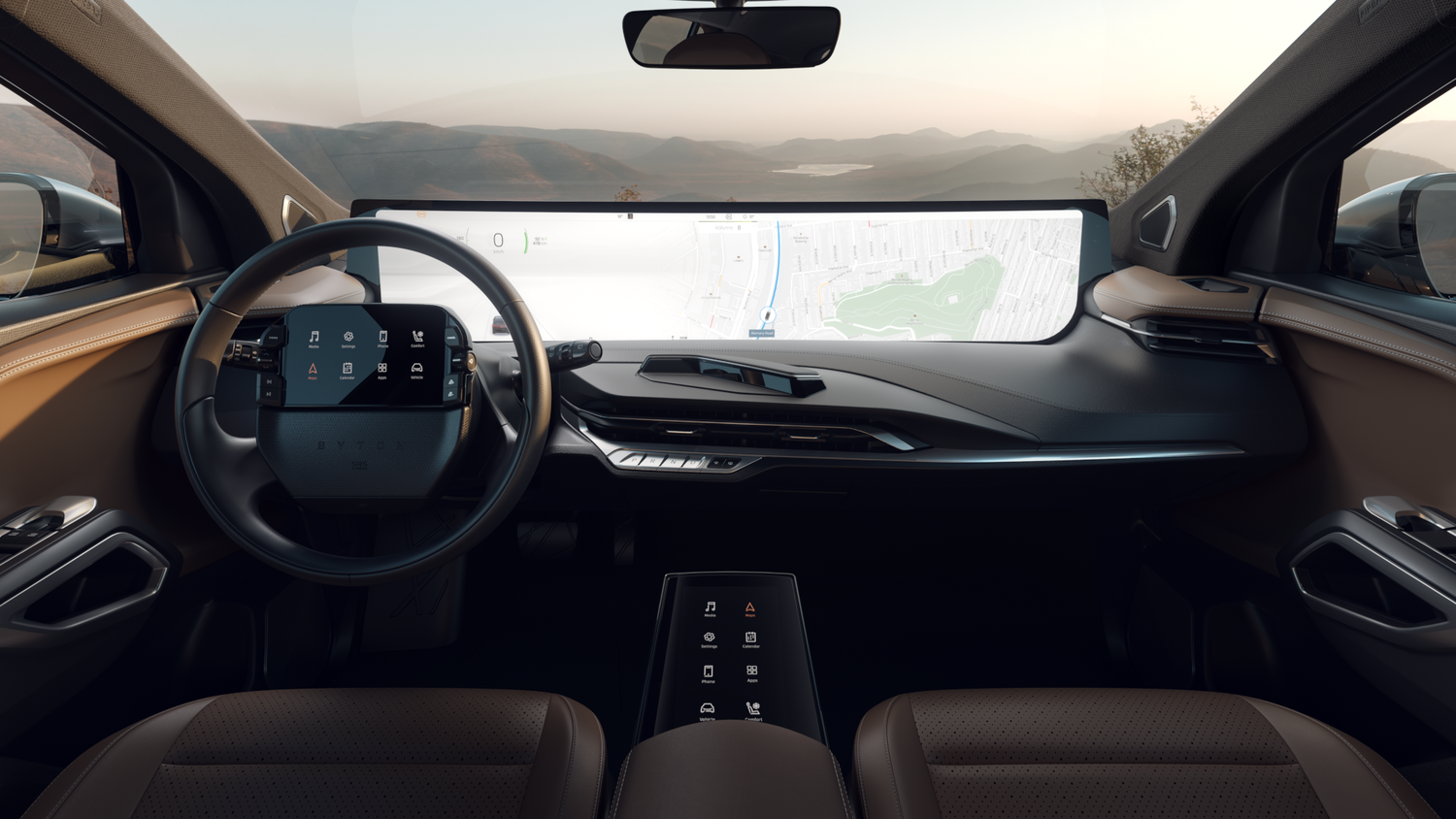
Steering Wheel Button Architecture
I defined the steering wheel hard button's architecture and gestures, for both the premium and standard vehicle packages. This involved determining how each hard button on the steering wheel interacted with the vehicle's multiple displays, voice system, volume/sound system and ADAS system for both packages. Each button had a double function. Quick vs long pressing each button would trigger a different function (e.g. short pressing one of the buttons lowered the volume incrementally, while long pressing muted it). I did a lot of competitive research to determine the best way to architect the buttons based on Byton's needs and what user's are used to in the current market. The look of the steering wheel was designed by the interior designers.
Customer Concern:
Interact with the main screen, audible features and ADAS system with ease, so customer’s focus is on driving/parking safely.
Business Goals:
Attract more potential buyers by providing multiple priced ADAS package options. (1) The Standard Package, which only includes the ADAS features that are required by law and no ADAS buttons on the steering wheel. (2) The Premium Package, which includes extra assistive and autonomous driving features for a higher price and does include ADAS buttons on the steering wheel.
Tasks:
Competitor Research, UX Architecture, Defined Gesture Triggers, Switch Map Interaction Model, Use Cases
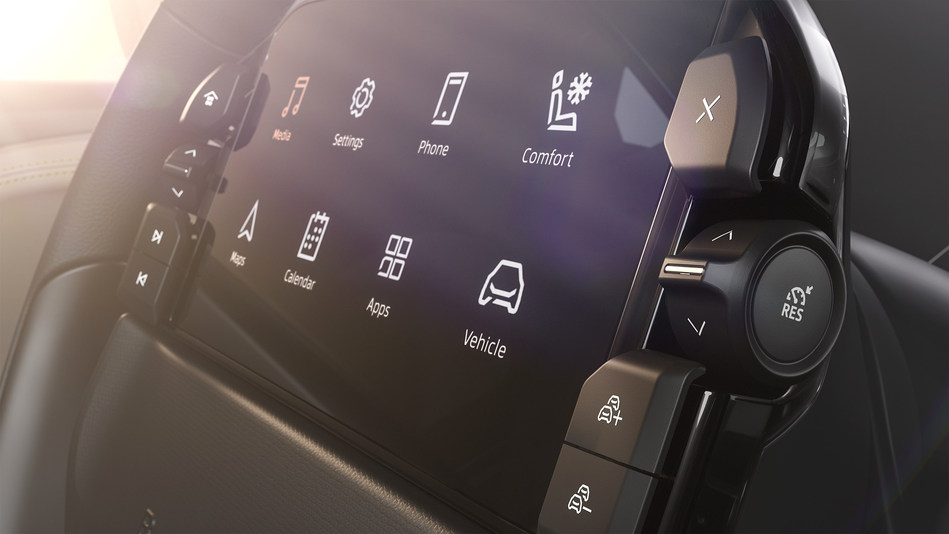
Multi-screen System Interaction Modal
Worked with the team to develop the overall system interaction model, which could be navigated using various forms of interactions, including voice, touch and gesture. The model adjusts for cases where there were various users or a solo user in the car. We developed prototypes to test and validate interaction model concepts in multiple target markets. Final interaction model is shown in the video below.
Customer Problem:
How should the multi-screen interaction model adjust for cases where there are various users or a solo user in the car? Where does each app display within the shared experience screen?
Business Goals:
Determine the priority level of each feature for a safe and enjoyable experience for the driver and front passenger (e.g. features needed for safely driving have priority).
Tasks:
UX Architecture, Switch Map Interaction Model, Use Cases, Prototypes
Co-Creation Study
Conducted a series of 1:1 co-creator interviews to validate concept features, interaction model and visual moodboard explorations with 30 potential buyers, in Shanghai, China.
Customer Concern:
Enable co-creators to contribute their ideas, likes, dislikes, intentions, desires, ambitions, and dreams into our product and service process
Business Goals:
- - Learn early and fail fast by listening to our customers
- - Establish a meaningful relationship with co-creators
- - Learn from each workshop to set a new precedence for each co-creation workshop
- - Validate concept features
- - Validate in-car interaction model between driver tablet, center console display, and shared experience display
- - Validate exploratory visual moodboards
- - Validate vehicle product features
Tasks/Techniques Used:
Card Sorting, Paper Prototyping using magnets
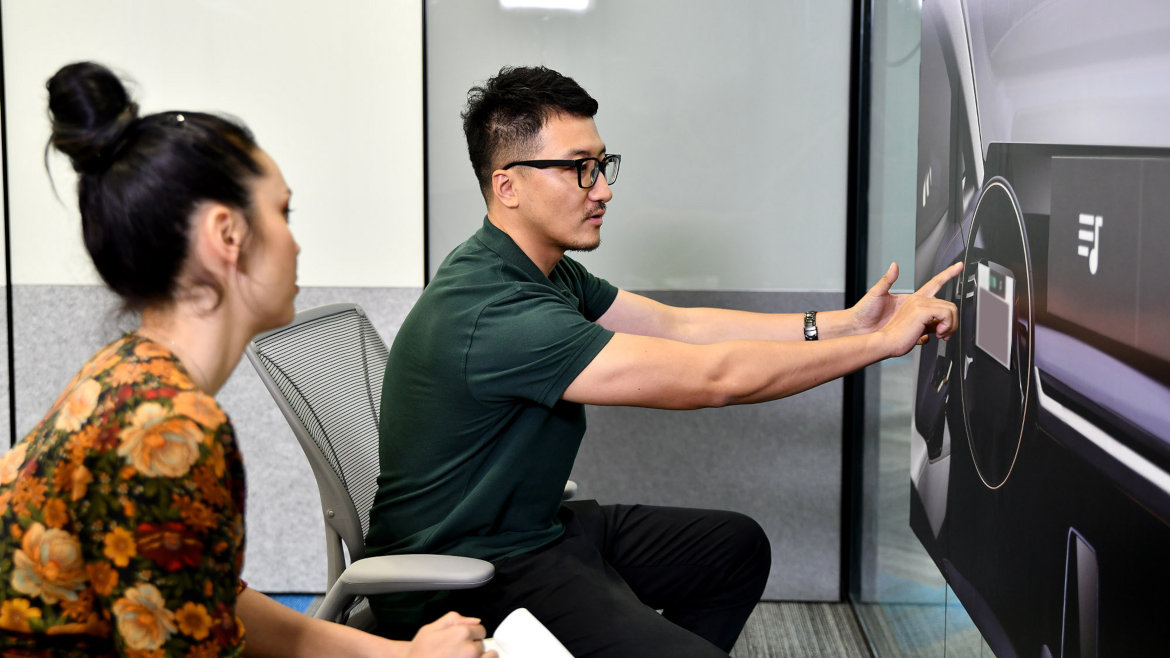
Health Feature
I was the lead UX designer of the in-vehicle myHealth feature that was presented at CES 2018. Built-in hardware synchronizes with the user's other devices, enabling BYTON to track the user's health status, including weight, heart rate, blood pressure; and synchronizes user's data to give personalized fitness advice. Byton wanted the vehicle to proactively suggest when a driver should take a break, a walk, listen to calming music in order to destress.
Business Challenge:
Can the vehicle improve the driver's and passenger's health by gathering their health data and providing each with personalized in vehicle experiences and advices?
Business Proposal:
The health and healthcare industry is expanding more then ever and has a lot of room for improvement particularly in China. Bringing this feature built into the experience inside and outside of the car could attract more buyers.
Tasks:
UX Architecture Flow, Low Fidelity Wireframes, High Fidelity Wireframes, Gesture Commands, QA'ed Concept for CES 2018
